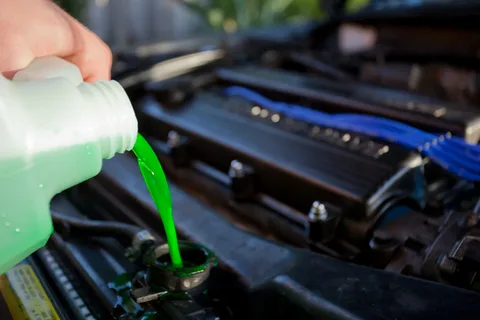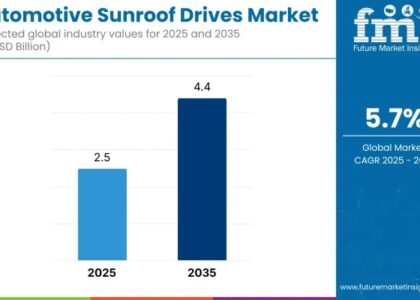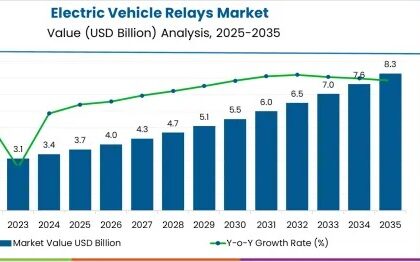The global EV coolant market is estimated at USD 500 million in 2025, up from approximately USD 297.2 million in 2023, and is expected to grow to USD 3.9 billion by 2035, reflecting a CAGR of 28.7%. Growth is being supported by increased electric vehicle production, stricter safety standards for thermal systems, and substantial innovation in fluid formulations.
Electric vehicles have redefined modern transportation—sleek drivetrains, whisper-quiet operation, and over-the-air updates have transformed cars into dynamic digital machines. But behind every high-voltage battery pack and power-dense inverter lies a critical, often invisible component: the EV coolant.
It doesn’t get talked about during showroom visits or feature in ad campaigns. Yet without it, electric powertrains would overheat, degrade, and eventually fail. In a sector where range anxiety and thermal stability can make or break consumer trust, EV coolants are doing the heavy lifting—silently and consistently.
Get Ahead with Our Report: Request Your Sample Now!
https://www.futuremarketinsights.com/reports/sample/rep-gb-16579
Beyond Water: The High-Stakes Chemistry of Thermal Management
Unlike traditional engine cooling, thermal regulation in EVs is far more complex. Batteries, motors, onboard chargers, and power electronics all generate heat at different rates—and all are sensitive to temperature changes. The role of the EV coolant isn’t just to manage engine warmth—it’s to create a thermally balanced environment that maximizes performance and extends lifespan.
Modern EV coolants must deliver fast heat absorption, high dielectric strength, and long-term chemical stability—all while remaining compatible with exotic materials inside battery enclosures and compact cooling loops. This isn’t a job antifreeze can handle.
Overshadowed by Voltage and Software
As automakers compete over charging speed, range, and autonomy, cooling systems remain a background player. Most R&D investment flows toward battery chemistries or next-gen processors, leaving coolant innovation out of the limelight. But neglecting thermal management is risky business.
If a coolant system underperforms, it can cause battery swelling, power throttling, or even thermal runaway. For EVs operating in extreme climates—whether cold Nordic winters or desert highways—temperature control is the invisible safety net consumers never see but always depend on.

Material Mismatches and Integration Challenges
Many EV platforms are now modular, shared across multiple vehicle types. That modularity brings convenience, but it also introduces variability in component size, layout, and thermal load. One-size-fits-all coolant systems simply don’t work anymore.
Suppliers often struggle to deliver fluids that perform across wide voltage ranges and diverse architectures. And because EV designs are tightly packed, thermal pathways are harder to access and more difficult to service. If a coolant degrades or becomes electrically conductive, it can directly compromise high-voltage insulation or damage sensitive electronics.
Hidden Link to Charging Speed and Battery Health
What many drivers don’t realize is that charging time is partially governed by how effectively a battery can cool itself. Faster charging creates more heat—and without the right coolant system, that heat lingers, forcing the battery to slow down the charge or risk damage.
Similarly, battery degradation accelerates at higher average temperatures. This means the very lifespan of an EV—its resale value, its warranty claims, its environmental footprint—is directly tied to how well its coolant does its job.
Exhaustive Market Report: A Complete Study
https://www.futuremarketinsights.com/reports/ev-coolants-market
A Call for Fluid Innovation, Not Just Electrification
As EV adoption grows, the demand for smarter coolant solutions will intensify. That includes engineered fluids with nano-additives for better thermal conductivity, non-conductive coolants for direct battery contact, and integrated cooling modules that reduce weight and improve energy efficiency.
OEMs and suppliers need to treat coolant systems as strategic assets, not commodity parts. That means funding material research, building multidisciplinary teams that include chemists and thermal engineers, and factoring coolant performance into the core vehicle validation process.
The Invisible Infrastructure of EV Performance
The future of mobility is electric—but it won’t move smoothly without intelligent thermal design. EV coolants may never get a design award or spark consumer enthusiasm. Still, they remain central to everything the industry is trying to achieve: longer range, faster charging, higher safety, and lower maintenance.
Overlook them, and even the most advanced vehicle will falter under its own heat. Respect them, and they become the silent force that keeps the electric revolution humming.





